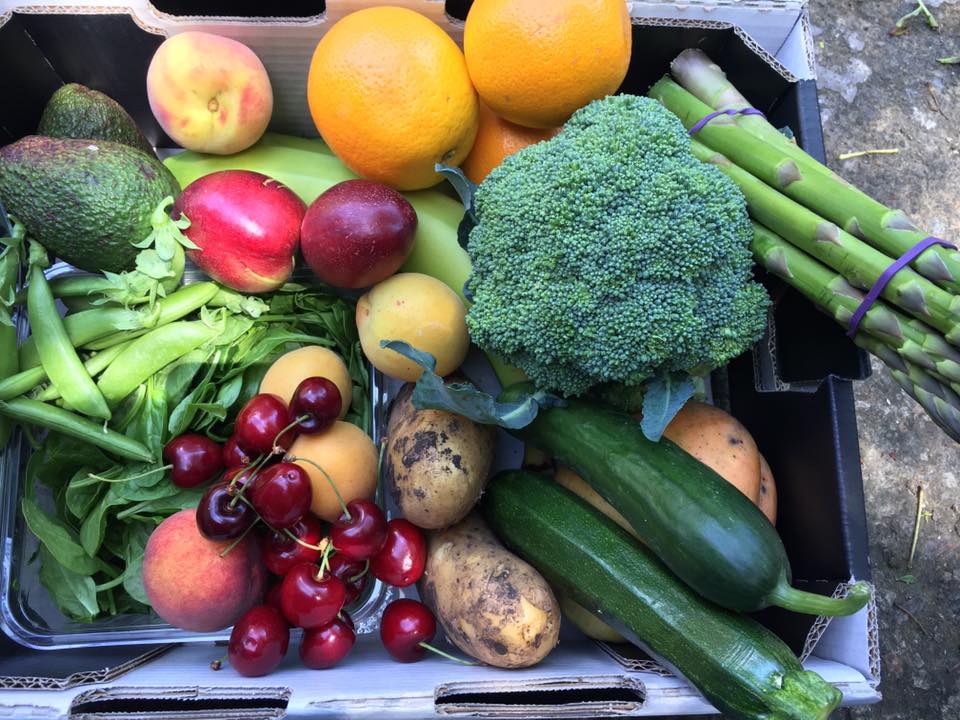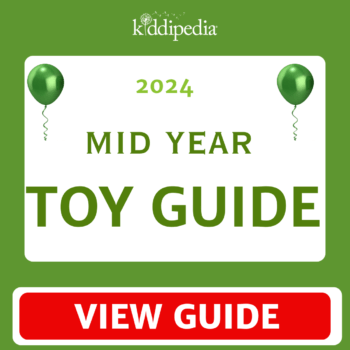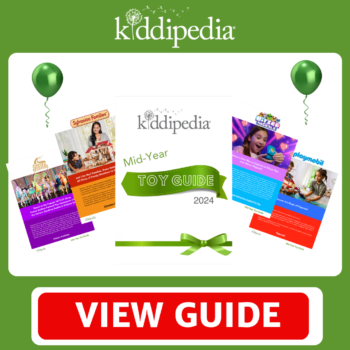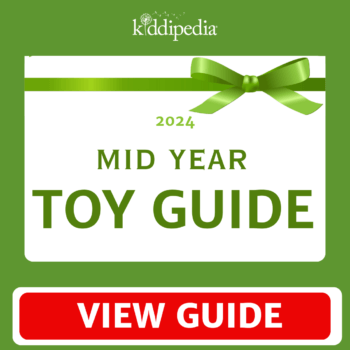As promised, I’m going to be listing a few of my favourite eosinophilic oesophagitis (EOE) friendly food products and Christmas recipes. Although there is a vast variety of foods that those with EOE can react to, this post will be focussing on the 6-8 most common EOE allergens; milk, egg, wheat, soy, peanuts/tree nuts, and seafood (fish/shellfish).
Strict avoidance is a must when following an EOE elimination diet so looking through ingredient lists on packaged products is, unfortunately, a necessary evil. Even if you’re familiar with a product, rechecking ingredients lists before each purchase is essential. Companies can change their formulation at any time without warning.
Food Standards Australia and New Zealand (FSANZ) have an interactive webpage which takes you through an example of labelling standards found on food products.
Once you’ve located the ingredient list on a product, check that it doesn’t contain any of the ingredients you need to avoid. In this example, we’ll be avoiding milk, egg, wheat, soy, peanuts/tree nuts, and seafood (fish/shellfish).
And because I want you to get comfortable with label reading, I’ve kindly including the accompanying ingredient list to the below food products
Ingredient exemptions
To add to the fun of navigating the world of allergy, there a small list of ingredients that are derived from wheat and soy which don’t contain the protein portion of the allergen and so can be consumed without posing a risk.

Precautionary Allergen Labels/Statements
Some products also contain Precautionary Allergen Labels/Statements (PAL) which are commonly found under the ingredients list. PALs can make statements such as ‘may contain’ or ‘may be present’ or ‘made in the same facility as’.
They are indented to be an indication of product cross-contamination during the manufacturing process. There is currently not enough research on the levels of tolerable allergen exposure for EOE suffers. For this reason, its common practice to suggest avoidance of foods that also contain PALs.
Currently, PALs are voluntary are not regulated by FSANZ. However, with the Allergen Bureau’s new VITAL program hopeful, we can start to see PALs become more regulated and not unnecessarily overused.
The EOE 6 Food Elimination friendly products
The EOE elimination diet requires a lot of dedication and it can go on for some time. Due to its prolonged nature and exclusion of several nourishing ingredients, specialist dietitian input is recommended. Remember, companies can change their formulation at any time, so please always check the ingredient list before buying.
I’ve selected food products that are available in Australia, most form the main supermarket chains but some from speciality food shops.
Some brands presented also have a range of other ingredients that may by EOE friendly. Look on their website for more information. Just a quick note, I don’t receive sponsorship from any of the brands mentioned in this blog.
Milk alternatives
Cow’s milk can play a big nutritional role in children and adolescence, largely due to its source of protein and calcium. For this reason, some milk alternatives may not be appropriate for children under 2 years old. Consult your specialist or dietitian for more advice.
Products derived from pea protein are starting tog et more shelf space in Australia. Compared to any other alternative, pea protein milk has a nutritional profile that’s closer to that of cows mil. Other milk alternatives readily available include Rice and Oat milk. Try to look out for the brands that supplement their milk with calcium such as VitaSoy.
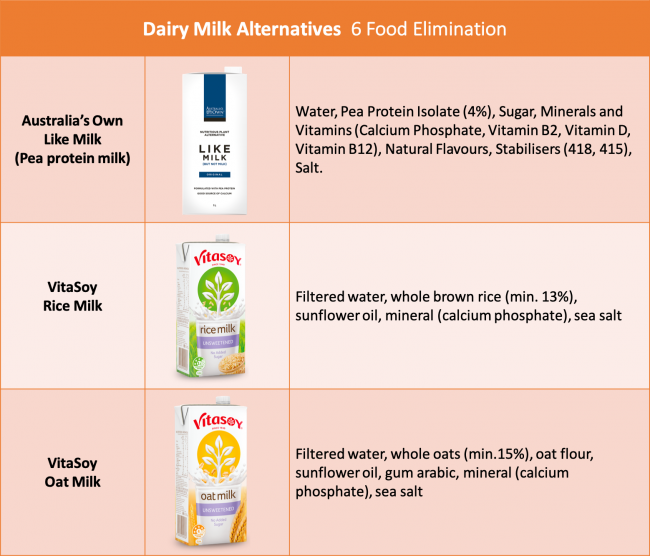
Protein supplement
At times, especially for growing children and adolescence, it is can be quite difficult to maintain an adequate intake of energy and protein whilst on the EOE elimination diet. Bulk Nutrient’s rice a pea protein formula contains a respectable amount of protein and energy. Consult a dietitian for guidance on the use and dosage of and supplements.
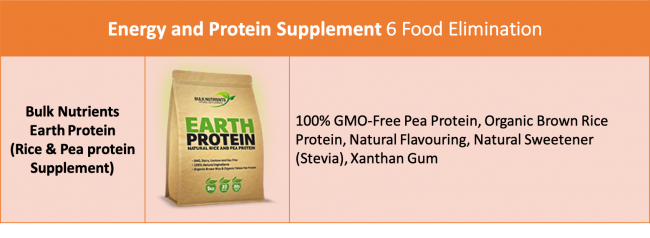
Yoghurt alternatives
Yoghurt can be a quick nutritious snack. The Australian market has a wide range of coconut-based yogurts such as Cocobella and Nudie coconut. Unfortunately, coconut yoghurts have half the amount of protein as their dairy counterparts and typically don’t contain any calcium. Adding protein rich seeds and grains (chia, oats, teff, hemp, flax) to the yoghurt will help increase its nutritional profile. Be on the look out for allergy free yoghurts that have added pea protein, such as Daiya’s deliciously dairy free yoghurt. Sadly, I haven’t seen this product available at major supermarkets yet. Try talking to your nearest specialty food shop to see if the can arrange on order of stock, you might be pleasantly surprised. The added pea protein can significantly increase the nutritional profile of the yoghurt and every little bit helps when you are following such a restricted EOE elimination diet.

Cheese Alternatives
As with EOE friendly yoghurts, EOE elimination diet cheeses are predominantly coconut-oil- based and tend to have very small amounts of protein, if any. They however serve an important purpose by providing a source of energy and also contributing to food familiarity which, can be helpful when changing a diet so drastically. Both Bio cheese and Buteisland are readily available at major supermarkets. Again, keep an eye out for EOE friendly cheese with added pea protein such as the Daiya dairy free mozzarella.
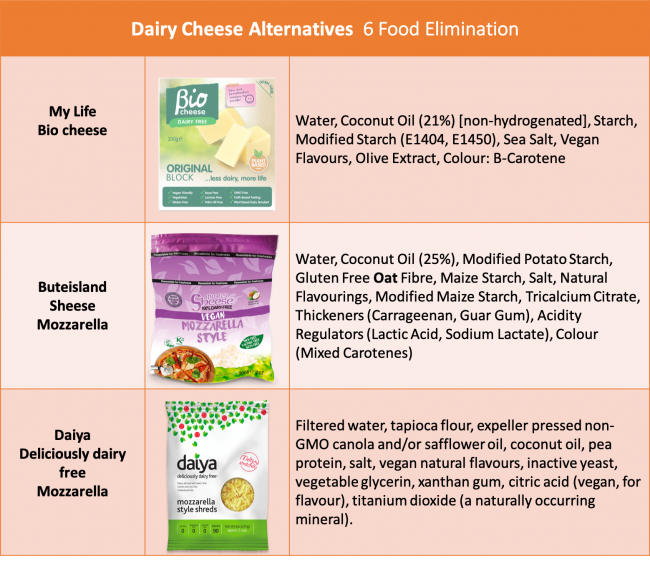
Bread, grains and cereals alternatives
Bread, grains and cereals can be a big staple in our diets, especially for children so its important to spend some time finding an alternative you enjoy.
Excitingly, Old El Paso added gluten free tacos to their product range. These are available at the major supermarkets and just quietly, I find them delicious. Deeks make a range of EOE friendly bread and buns, have a look on their website to find a stockist hopefully, near you. Bfree, is another brand dedicated to making products free from gluten, wheat, dairy, eggs, nuts and soy. Their EOE friendly wraps are available at Woolworths.
Freedom foods have a large selection of allergy friendly cereals such as corn flakes, cocoa bombs and rice puffs. Oats are an allergy friendly option too. Have a look at the recipe below for overnight apple and cinnamon oats. Sanitaruim also have a gluten free Weetabix range which does taste quite nice.
Grains such as quinoa, rice, buckwheat, millet and corn are good wheat free alternatives. Rye and barley may also be appropriate but because they are similar to wheat, your specialist may suggest excluding them too.
Pulses and legumes such as beans and lentils, chickpeas are a good allergy friendly alternative to wheat. Sanremo have introduces an EOE friendly pulse pasta. The pulse addition means that this pasta is also provides a good source of protein.
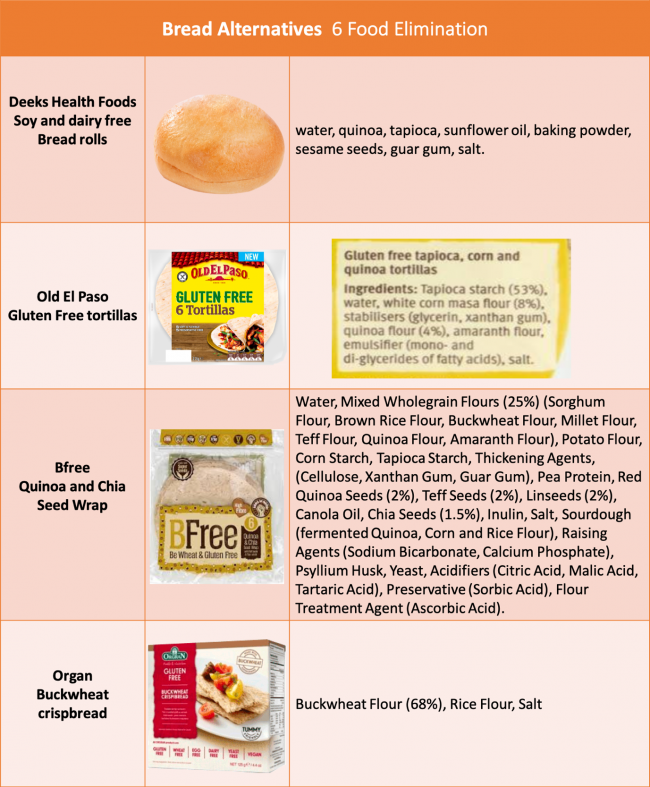
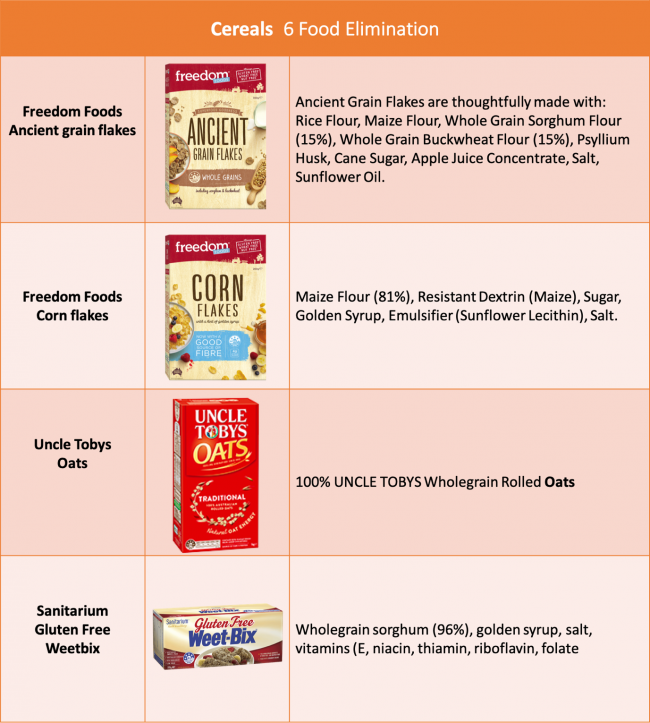
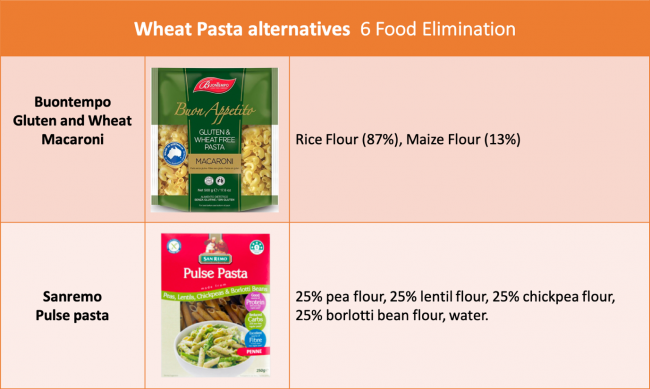
Snack alternatives
In regard to whole foods, Fresh fruit or vegetables sticks are a good option. If you’re needing to up the energy and protein intake then enjoying vegetables with dips such as hummus SSS hummus can help. Home-made popcorn can be a fun snack. When cooking it up use canola oil or dairy free margarine and try loading them up with allergy free cheese for some extra goodness. Cobs do make fun sized air popped corn, just double check the ingredients list for any allergens. Have a look at the snacks and spreads list bellow for some ideas.
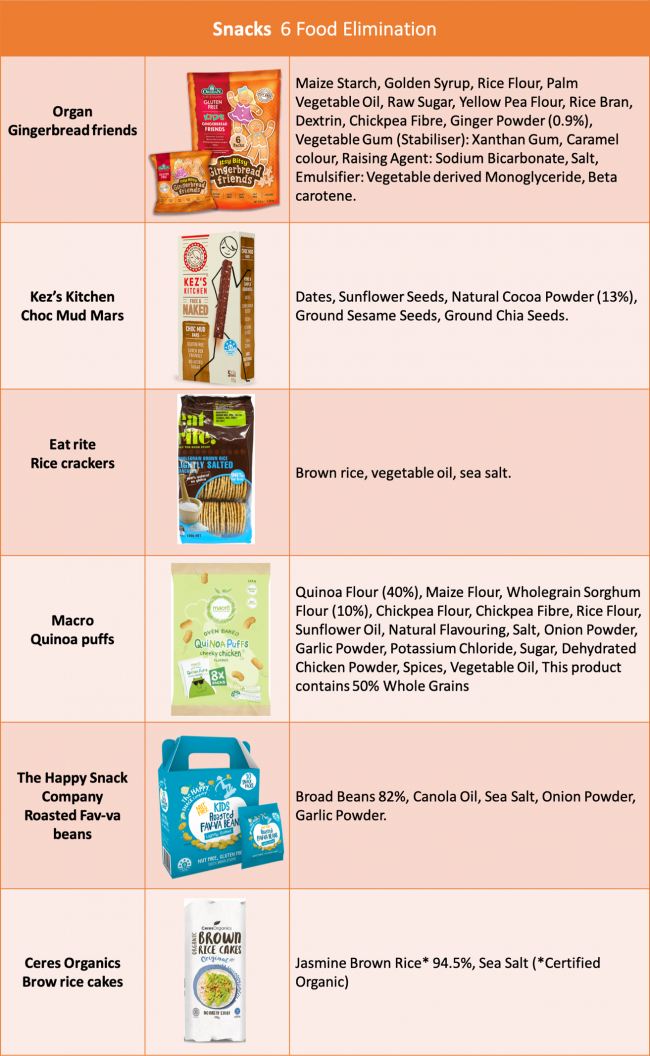
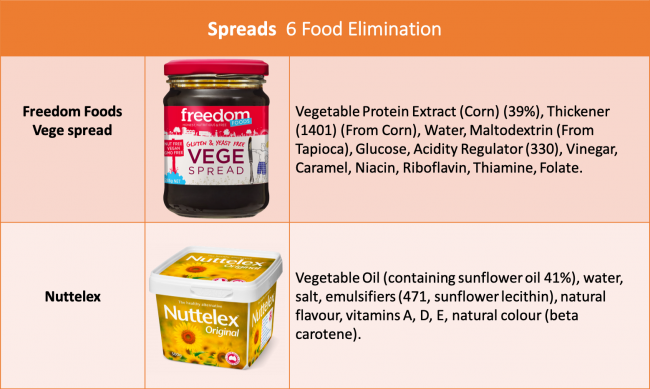
I hope the list of product above proves to be helpful and that you now can feel more confidant and at easy about reading ingredient lists.
Disclaimer:
This post is not indented to replace medical or dietetic advice.
No conflicts of interest or sponsors to declare. The food products mentioned in the blog were all paid for in full.
You may also like to read:
Allergies and Special Occasions




